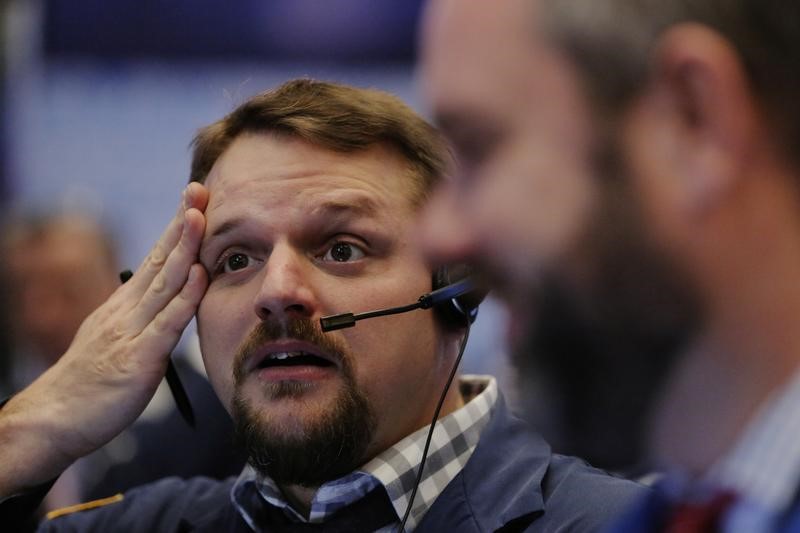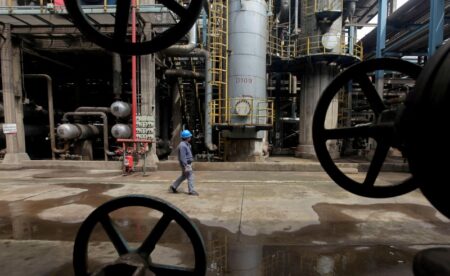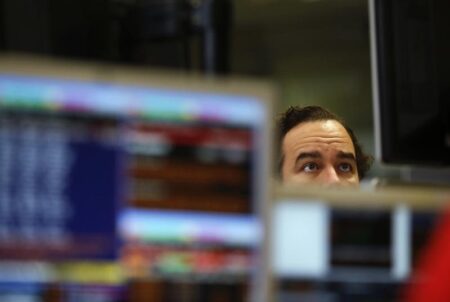(Reuters) – Washington imposed new sanctions on Wednesday on the Moscow Exchange and its clearing agent, the National Clearing Centre (NCC), leading to an immediate trading halt in dollars and euros on Russia’s largest bourse.
The U.S. Treasury said it was “targeting the architecture of Russia’s financial system, which has been reoriented to facilitate investment into its defense industry and acquisition of goods needed to further its aggression against Ukraine”.
Russia shrugged off the move, pointing to the reduced role of the dollar and euro since Moscow’s February 2022 full-scale invasion of Ukraine led to sweeping Western sanctions.
But the U.S. move took the market by surprise and it may take days, if not weeks, for it to settle into the new reality.
TRADING HALT
The central bank said Moscow Exchange trading in dollars, euros and Hong Kong dollars would stop. The sanctions, particularly the inclusion of the NCC, prevent traders from settling spot and futures contracts with dollars through MOEX infrastructure.
“The sanctions were imposed only by the U.S., but EU countries also observe them,” the central bank said. “Therefore, exchange trading was also stopped in the euro.”
MOEX will likely face reduced trading volumes, which could squeeze its profits. Its shares sank 15% at the market opening in Moscow, before settling around 4.8% lower.
The fact that no clear indicator of the rouble-dollar rate emerged at the start of the banking day suggests that Russia’s financial system was not 100% ready for this move, said Yevgeny Nadorshin, chief economist at PF Capital.
SILVER LININGS
Crucially, around 60% of Moscow-based FX trading is now conducted over-the-counter (OTC). The central bank said it would calculate the official rouble rate based on OTC trading.
Since it started calculations in this way, the bank has only observed “insignificant deviations” from the official exchange-traded rate for the dollar and euro.
The exchange rate will remain market-based – it is only the data used for calculating it that has changed.
Another benefit for Russia is that burgeoning trade with China as Moscow redirects trade flows east has made the yuan the most traded currency in Moscow, with 54% of the market in May, up from a negligible pre-war share.
“To determine where the fair rate is, market participants will be able to rely on the cross rate of rouble-yuan and yuan-dollar and yuan-euro,” said Alfa Capital.
ROUBLE PROSPECTS
Short-term volatility is unavoidable, but a strengthening of the rouble is possible in the medium-term. When payment difficulties hampered imports early this year, the rouble gained, said Raiffeisen Bank analysts.
“Over the longer horizon, the rouble could even strengthen further. As it becomes more difficult to withdraw foreign currency … this could lower demand for it,” said Alfa Capital.
“Let’s remember 2022: the rouble initially weakened strongly due to market panic, but then began to strengthen.”
The central bank said the rouble rate was determined by the balance of supply and demand for foreign currency received from foreign trade activities and did not depend on how transactions were carried out.
Russian exporters that are obliged to sell a portion of their foreign currency revenues as part of capital controls supporting the rouble would continue to do so in dollars, directly through authorised banks, the central bank said.
WIDE SPREADS, OTHER RISKS
Brokers were offering wide buy-sell spreads and many were not conducting transactions at all, further evidence of the market’s general lack of preparedness for the sanctions.
“In the future, the difference between U.S. dollar and euro buying and selling rates will become larger than before, however the emergence of additional transaction costs and more complex access to buying major world currencies will to some extent limit domestic demand for foreign assets,” said Oleg Kuzmin and Andrei Melaschenko of Renaissance Capital.
Washington has clearly signalled its intent to clamp down on banks in third countries that enable Russia to sustain its war effort.
“The new restrictions increase the level of risk in terms of possible secondary sanctions,” said Alfa Bank.
Read the full article here
















